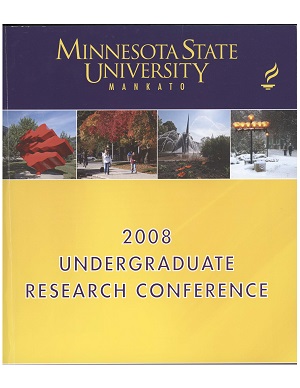Formulation of an X- Ray Opaque Polyurethane Material for Vascular Studies
Location
CSU Ballroom
Start Date
21-4-2008 1:00 PM
End Date
21-4-2008 3:00 PM
Student's Major
Chemistry and Geology
Student's College
Science, Engineering and Technology
Mentor's Name
Michael Bentley
Mentor's Department
Biological Sciences
Mentor's College
Science, Engineering and Technology
Second Mentor's Name
Brian Groh
Second Mentor's Department
Chemistry and Geology
Second Mentor's College
Science, Engineering and Technology
Description
The focus of this research is to find an x-ray opaque polyurethane material for vascular studies. Polyurethane is an adequate polymer for obtaining vasculature corrosion casts. To formulate one, we need to find a contrast agent such as lead or barium compound that will not react with the polyurethane resin or hardener. Finding a contrast agent that does not affect the polyurethane is needed to allow contrast between tissue and structure when viewing under micro computerized tomography (micro CT). Fine powders of different heavy metal compounds were mixed with the polyurethane resin. The heavy metal compounds were created by forming an insoluble heavy metal salt that precipitated from aqueous solution as a fine powder. Washing of the heavy metal salt was preformed to remove any that was formed. Once the fine heavy metal powder is created, mixing becomes an issue. When the heavy metals were mixed with the resin first, this allowed the heavy metals to stay in suspension. Methyl ethyl ketone is used in this mixture to decrease the viscosity of mixture. Mixing the heavy metal first with methyl ethyl ketone before mixing with the resin caused particles to separate from the solution. The particle sizes in the resulting mixture must be no greater than 1 micron to insure proper infusion into the vasculature tissue. After the resin polymerized, the particle size of the heavy metal compounds were evaluated by light microscopy. Continuing research will involve optimizing the polyurethane formulation and examining the casting of tissue microvasculature.
Formulation of an X- Ray Opaque Polyurethane Material for Vascular Studies
CSU Ballroom
The focus of this research is to find an x-ray opaque polyurethane material for vascular studies. Polyurethane is an adequate polymer for obtaining vasculature corrosion casts. To formulate one, we need to find a contrast agent such as lead or barium compound that will not react with the polyurethane resin or hardener. Finding a contrast agent that does not affect the polyurethane is needed to allow contrast between tissue and structure when viewing under micro computerized tomography (micro CT). Fine powders of different heavy metal compounds were mixed with the polyurethane resin. The heavy metal compounds were created by forming an insoluble heavy metal salt that precipitated from aqueous solution as a fine powder. Washing of the heavy metal salt was preformed to remove any that was formed. Once the fine heavy metal powder is created, mixing becomes an issue. When the heavy metals were mixed with the resin first, this allowed the heavy metals to stay in suspension. Methyl ethyl ketone is used in this mixture to decrease the viscosity of mixture. Mixing the heavy metal first with methyl ethyl ketone before mixing with the resin caused particles to separate from the solution. The particle sizes in the resulting mixture must be no greater than 1 micron to insure proper infusion into the vasculature tissue. After the resin polymerized, the particle size of the heavy metal compounds were evaluated by light microscopy. Continuing research will involve optimizing the polyurethane formulation and examining the casting of tissue microvasculature.
Recommended Citation
Mathwig, Charalette. "Formulation of an X- Ray Opaque Polyurethane Material for Vascular Studies." Undergraduate Research Symposium, Mankato, MN, April 21, 2008.
https://cornerstone.lib.mnsu.edu/urs/2008/poster-session-B/14



